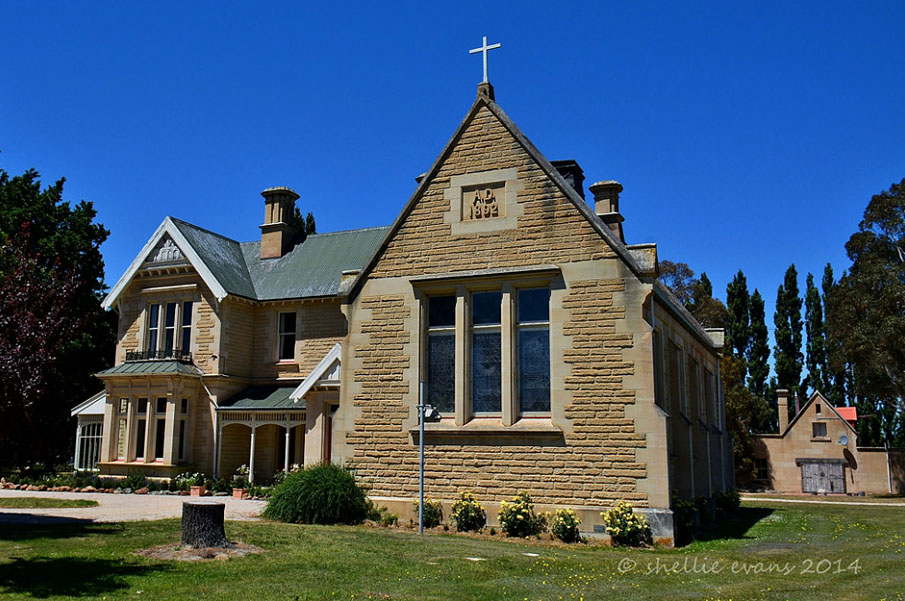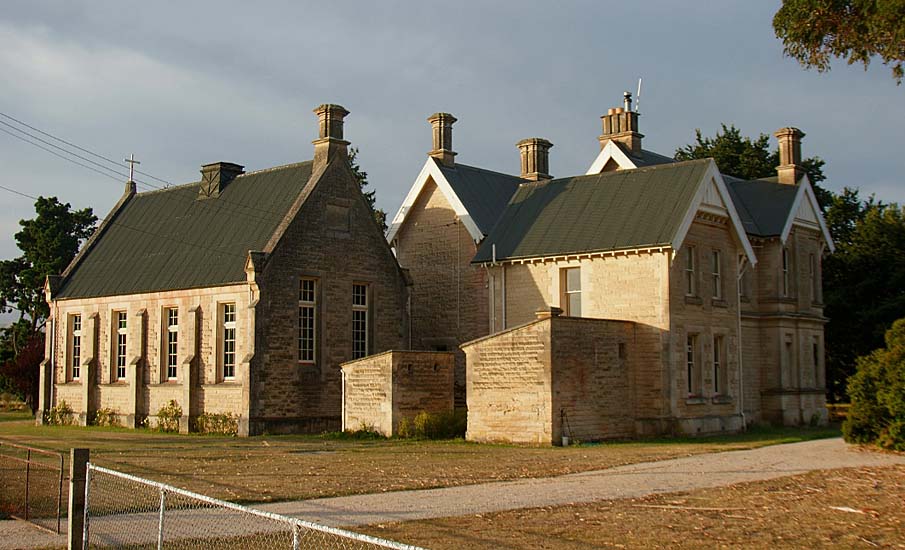This elegant and spacious vicarage and chapel, designed by Oamaru architectural partnership Forrester and Lemon and built in Kurow in 1893 for the Waitaki Valley Anglican parish, has architectural, aesthetic and historical significance. Between 1881 and 1891 the Waitaki Valley Anglican community was served by local curates who were appointed by the vicar of Oamaru. In 1891 the Waitaki Mission District was established and Hugh Corrie Frere was appointed to the Waitaki Mission District. The parish extended from the ‘sea coast to a point in the mountains beyond Kurow, about sixty miles from that township and included the settlements of Kurow, Ngapara, Livingstone, Maerewhenua, Duntroon and the Hakataramea Valley. Frere’s appointment coincided with the generous but problematic £6000 bequest left by Emily Campbell, wife of the late Robert Campbell who had been a leading North Otago landholder. The Campbell bequest caused some difficulties for the parish. In 1892 the Church News reported from parish priest H.C. Frere that a ‘terrible mistake’ had been made in the bequest restricting it to the building of one church and parsonage for the Kurow and Duntroon districts. The trustees could not buy land or build two churches nor provide for the clergyman’s stipend. There was considerable local controversy over where the church should be built: the Duntroon folk wished for the church and parsonage to be erected side by side in their town; while Kurow people argued for the buildings to be there. Nor did the endowment provide for a stipend for a curate. Bishop Nevill stepped in to offer a compromise where the parsonage would be built at Kurow and the church at Duntroon. Forrester and Lemon prepared the plans for the parsonage buildings (at an approximate cost of £2500), leaving some £4000 for completing the church. The bequest made no provision for land, but a 12 acre site at the edge of Kurow was subscribed for. The plan showed a large room to serve as a church – 21 feet by 42 feet [6.4 by 12.8 metres] – able to seat 100 people. The status of the building meant there was great competition among builders for the project. In October 1893, architect John Megget Forrester advertised for tenders for the ‘erection of parsonage buildings at Kurow.’ In July 1893 the Oamaru Mail reported that the ‘Anglican Parsonage, to which is added a very commodious room for holding services’ was open. The parsonage was ‘an imposing-looking building of two storeys, and contains twenty rooms with every convenience inside, and stables a short distance away.’ The house remained the vicarage until 1970 when the last incumbent vicar vacated the property and since that time has been home to various tenants. In recent years a local group, the Kurow Victorian Preservation Group, has been fundraising to safeguard the future of the building. The accepted tenders were stonemason John Barclay (£1287) and that of carpenter John Menzies (£1444). The combined chapel/vicarage appears to be the only example of this building type in New Zealand, making it a very significant architectural grouping. The vicarage and chapel are built from locally quarried limestone and have timber joinery. The walls are rough-hewn and contrast with the ashlar foundations, quoins, string courses, and chimneys. The chapel is four bays in length, is connected to the south of the vicarage. Most of the furniture and fittings have been donated by parishioners – including the stained glass window. The vicarage is built in restrained English Revival style with bracketed eaves, half-timbered gable ends and a picturesque asymmetry. The principle elevations feature square bay windows crowned with hipped roofs and cast iron crestings and verandas carried on timber posts. The ground floor features an entrance hall, two living rooms, a study and a service wing, as well as providing access to the chapel. The first floor has five bedrooms – the master bedroom with a dressing room. There were two servant’s bedrooms above the service wing. In 2016, the St Alban’s Vicarage and Chapel remain key elements within the landscape of the Upper Waitaki Valley and remain the property of the Anglican Church.



Location
List Entry Information
Overview
Detailed List Entry
Status
Listed
List Entry Status
Historic Place Category 1
Access
Private/No Public Access
List Number
2435
Date Entered
2nd February 1992
Date of Effect
2nd February 1992
City/District Council
Waitaki District
Region
Canterbury Region
Extent of List Entry
Extent includes part of the land described as Lot A DP 1022 (RT OT94/174), Otago Land District, and the buildings known as the St Alban’s Chapel and Vicarage, thereon, as shown in the extent map tabled at the Rarangi Korero Committee meeting on 9 March 2017.
Legal description
Lot A DP 1022 (RT OT94/174), Otago Land District
Stay up to date with Heritage this month
